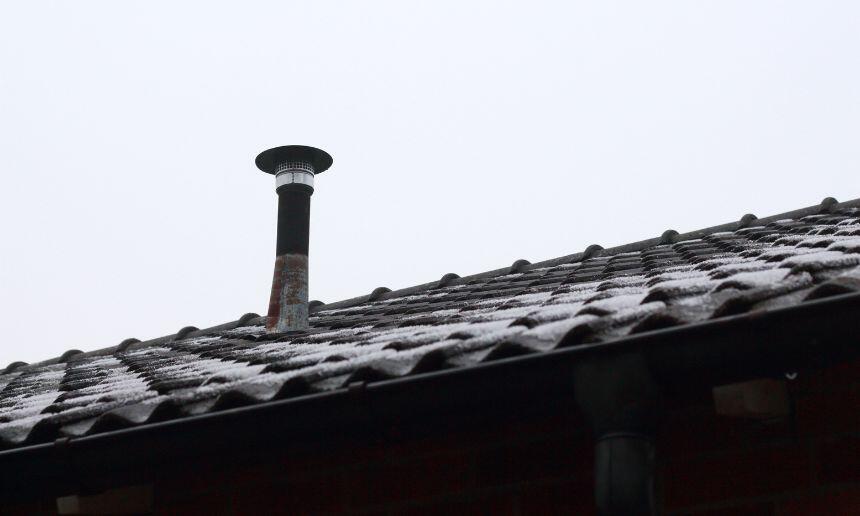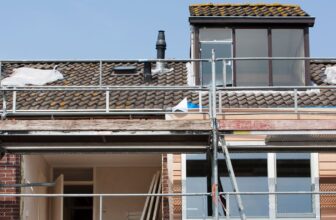Should Roof Vent Pipe Be Covered? (Answered!)
In modern plumbing, roof vent pipes are an indispensable part of how these systems operate.
Thanks to the pipes going through the roof, the house can have proper ventilation.
Vent pipes reduce humidity and allow sewage gases to vent, eliminating unpleasant smells from the bathroom and kitchen.
Plus, these pipes provide the air pressure in the plumbing system, so the water can drain properly every time you flush the toilet or empty the sink.
However, as these vent pipes end outside the house, many homeowners are concerned about how their exposure to the outside environment can impact their ability to function properly.
So, many of them wonder should roof vent pipe be covered to protect it from potential damage caused by the weather elements and everything else that may get inside.
Below, I’ll explain if this is a good idea and what benefits covering the roof vent pipe may bring.
So, let’s dive in!
Table of Contents
Should Roof Vent Pipe Be Covered?
The answer to this will depend on several factors, but, in general, you should cover your roof vent pipes.
This will reduce the risk of a pipe getting clogged up as debris, like twigs or leaves, and other dirt can fall in and cause problems as the air won’t be able to circulate freely.
This is particularly a concern if the house is located in high winds area or under a heavy tree cover.
Covering the roof vent pipe will also prevent small animals from getting inside or birds from nesting on top of it.
So, installing a cover on a roof vent pipe will allow it to function efficiently, prevent clogging, reduce leaks, and increase its durability.
Of course, the cover installed on the pipe shouldn’t fully seal it as that would defeat its purpose.
A sealed cover would impede the airflow and result in an increase of moisture inside the house.
Major Benefits of Covering the Roof Vent Pipes

Installing a cover on top of your roof vent pipe will, among other things, increase comfort and safety inside your house and cut maintenance costs,
Below is a short rundown of all the significant benefits covering the roof vent pipes can provide.
Increased Durability
Installation of the roof vent pipe is fairly complicated and needs to be done by professionals, so, increasing its durability can save you a lot of trouble and money, as well.
Installing a cover on top of the roof vent pipe will reduce the risk of it getting damaged and ensure it doesn’t break over time, so it will last longer and you won’t have to replace it often.
The exposed portion of the pipe and its top opening, are also its most vulnerable parts, so it’s important to have some protection over it.
Leakage Prevention
Even though the roof vent pipe is mainly intended for air circulation, it will still have some water running through it, mainly from the rainfall (especially during heavy storms) or moisture around it.
A cover on top will significantly decrease the amount of water running through the pipe and thus reduce the potential risk of leakage.
In general, a light downpour shouldn’t damage the pipe, but a harsher storm can cause major damage, and having the pipe covered will lessen the chances of cracks that can cause leaks which can completely ruin the walls, ceilings, and insulation.
Less Noise
A roof vent pipe can generate plenty of noise, especially when it’s not covered.
A decent roof vent pipe cover can reduce the levels of noise and make your time at home more enjoyable and peaceful.
Better Safety
A quality cover on top of your roof vent pipe will make your whole household safer, as it ensures it works properly and prevent it from breaking or parts of it falling off.
Plus, by helping the pipe function properly, a cover will contribute to reducing the moisture inside the house and by doing so, prevent mold development and bacteria growth.
Downsides of Covering the Roof Vent Pipes
While we established that covering the roof vent pipes is beneficial in multiple ways, you should be aware that there are also some downsides, especially if the cover is not properly installed or made of high-quality materials.
The vent pipes operate by allowing moist and hot air to vent out from the house and be replaced by cooler and fresh air flow.
When the pipe is covered, this process may be hindered to a certain degree, sometimes leading to condensation inside the house.
This is why you’ll need to make sure the cover, while protecting the pipe from the damage, still allows air to circulate freely.
As roof vent pipes are part of the larger ventilation system, their inability to function properly may also impede some other ventilation elements, such as soffit vents or gable vents.
How to Tell that a Roof Vent Pipe is Clogged
The cover on the roof vent pipe is only useful if it functions properly.
As they can get damaged due to various reasons, you should keep an eye on the signs that can tell you that the cover is not working and the pipe is clogged or leaking.
The most common signs are a slow drain in sinks or bathtubs, a gurgling toilet, a dry P-trap, a musty smell, or stains on the walls and ceilings.
As soon as you notice any of these signs, you should check the vent pipe and replace the cover if needed.
Conclusion
Roof vent pipes are one of the most important elements when it comes to the full functionality of your home.
They regulate the plumbing systems and vent out toxic gases while reducing the level of moisture inside the house.
So, it’s essential that you keep them working properly.
To make sure they don’t get damaged or clogged by anything that may fall inside the surroundings and to protect them from small animals and birds, you should seriously consider installing the cover on top of the pipe.
It’s a fairly cheap and simple process, but it can save plenty of money and frustration down the road.



















































































